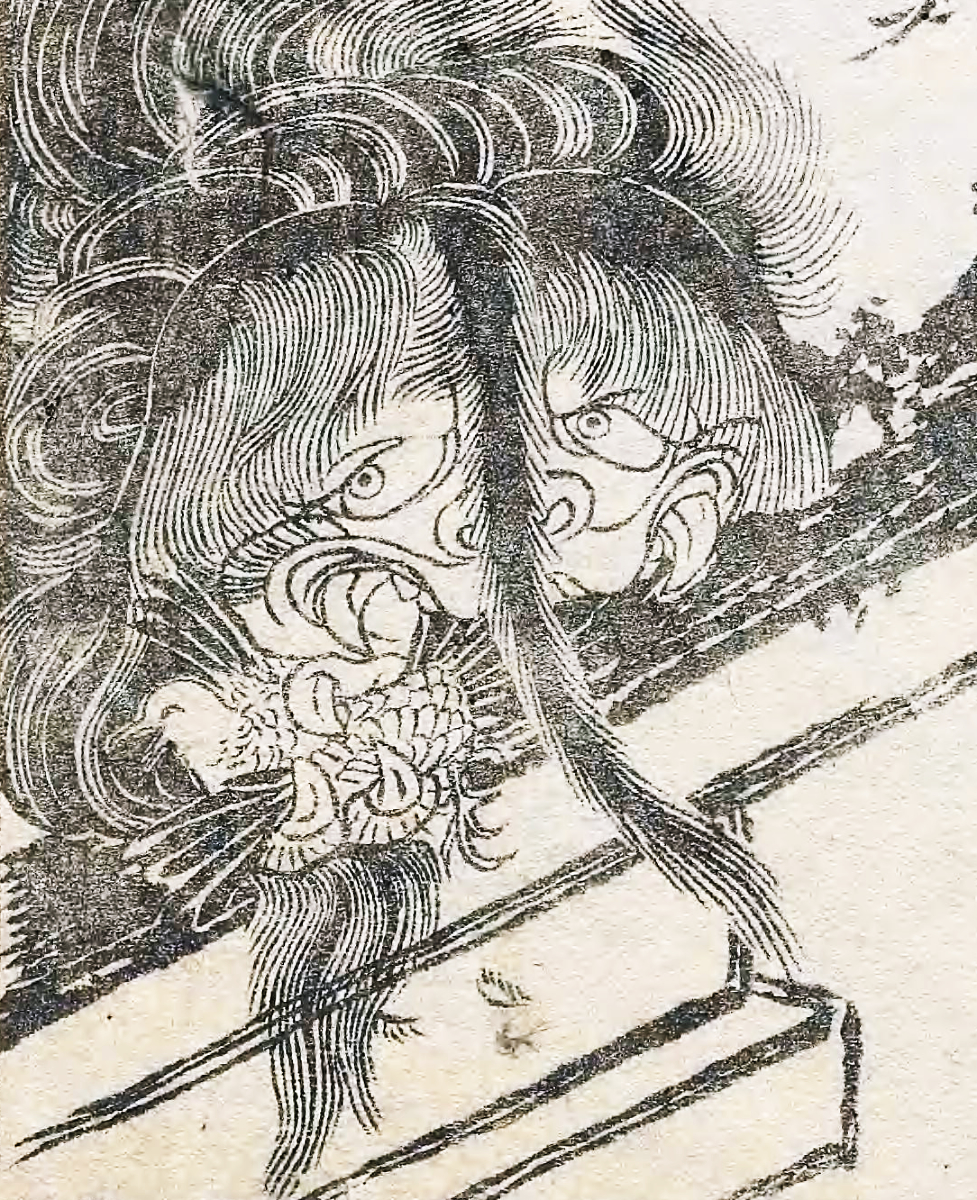Otoroshi are known by many regional names, most of them being wordplays denoting this monster’s fearsome appearance and wild, course mane that covers its body. Otoroshi appear as hairy, hunched, four-legged beasts with fierce claws and tusks. They have blue or orange skin. Though its existence has been known of for centuries, little is known about this rare and mysterious creature. Otoroshi are masters of disguise and are rarely seen except for when they want to be. They are most commonly spotted in high places like roofs. Other favorite places are the torii archways at shrines and the gates above temples that separate the physical world from the realm of the gods. Otoroshi act as a kind of guardian of these holy places. They eat the wild animals found in shrines and temples—particularly pigeons, sparrows, and other birds. Otoroshi attack humans only rarely: when they spot a wicked or imprudent person near a holy place—or when one tries to enter through the gateway they are guarding. Otoroshi attack by pouncing on their victims from above, tearing them to shreds, and devouring their remains. While its name implies ferocity and its appearance is quite grotesque, it is only known to be dangerous to the wicked. The name otoroshi, while not a word itself, appears to be derived from variations in regional dialects. It is generally accepted to be a corruption of osoroshii, meaning “scary.” Nothing is known of its origins; it is speculated to be related to a similar yōkai, the waira, due to their common habits and environment.
| Alias Odoroshi (おどろし) |
| Real Names/Alt Names “Scary”, “Frightening”, “Disheveled”; Alt: Otoroshi, Osoroshi, Odoro Odoro, Keippai |
| Characteristics Yōkai, Enlightenment and Neoclassicism, Japanese |
| Creators/Key Contributors ○ |
| First Appearance Japanese folklore |
| First Publisher ○ |
| Appearance List Gazu Hyakki Yagyō (画図百鬼夜行, “The Illustrated Night Parade of a Hundred Demons” or The Illustrated Demon Horde’s Night Parade) Vol. 3 “Wind” |
| Sample Read Gazu Hyakki Yagyō Vol. 3 “Wind” (1776) [Smithsonian] |
| Description Otoroshi are known by many regional names, most of them being wordplays denoting this monster’s fearsome appearance and wild, course mane that covers its body. Otoroshi appear as hairy, hunched, four-legged beasts with fierce claws and tusks. They have blue or orange skin. Though its existence has been known of for centuries, little is known about this rare and mysterious creature. Otoroshi are masters of disguise and are rarely seen except for when they want to be. They are most commonly spotted in high places like roofs. Other favorite places are the torii archways at shrines and the gates above temples that separate the physical world from the realm of the gods. Otoroshi act as a kind of guardian of these holy places. They eat the wild animals found in shrines and temples—particularly pigeons, sparrows, and other birds. Otoroshi attack humans only rarely: when they spot a wicked or imprudent person near a holy place—or when one tries to enter through the gateway they are guarding. Otoroshi attack by pouncing on their victims from above, tearing them to shreds, and devouring their remains. While its name implies ferocity and its appearance is quite grotesque, it is only known to be dangerous to the wicked. The name otoroshi, while not a word itself, appears to be derived from variations in regional dialects. It is generally accepted to be a corruption of osoroshii, meaning “scary.” Nothing is known of its origins; it is speculated to be related to a similar yōkai, the waira, due to their common habits and environment. |
| Source Otoroshi – Yokai.com |

